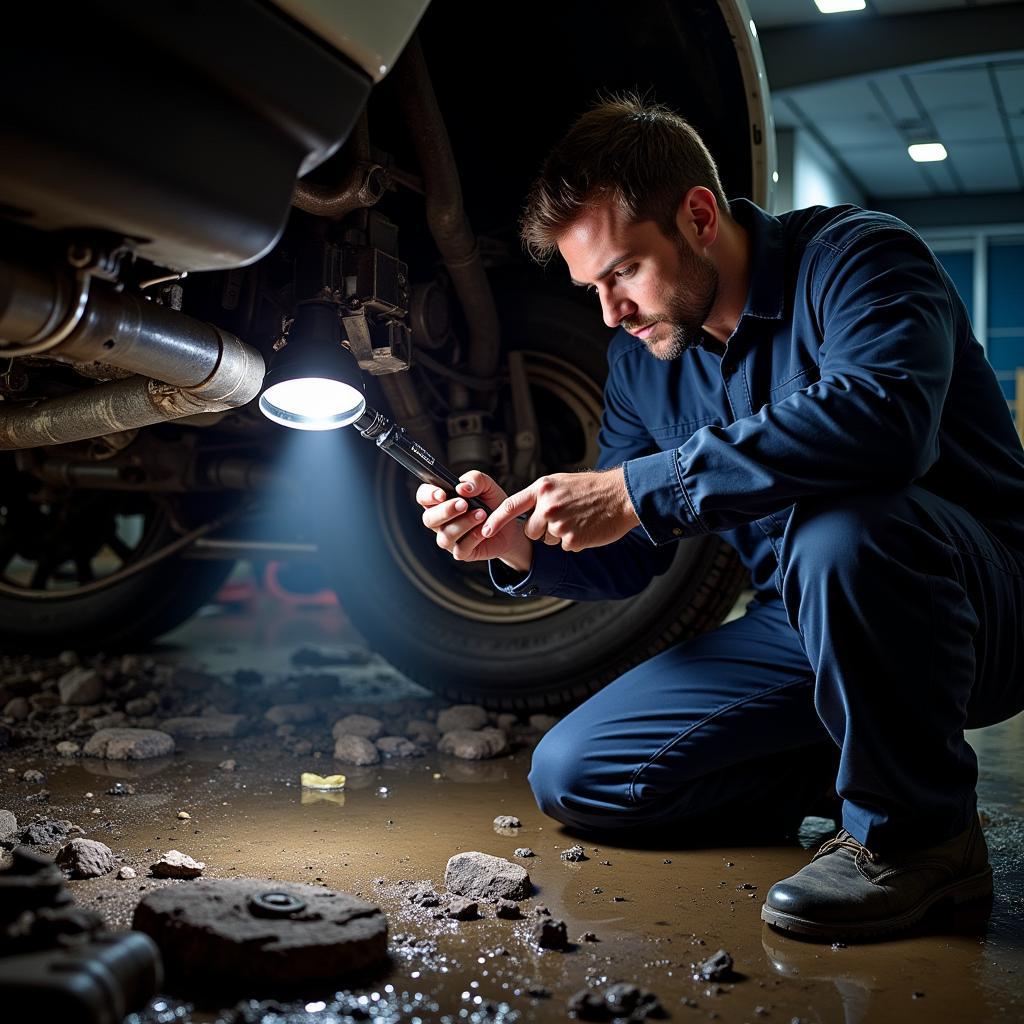Fixing a car amp can be frustrating, but it’s often a manageable DIY project. This guide covers common car amp problems and provides solutions to help you get your car audio system back in top shape, fixing electronics car amp issues effectively.
Understanding Car Amp Problems
Before diving into solutions, it’s important to understand the different types of problems you might encounter when your car amp isn’t working correctly. These can range from simple wiring issues to more complex internal component failures. Some common issues include no sound output, distorted sound, amp turning on and off intermittently, or only some channels working.
Diagnosing the Issue
The first step in fixing electronics car amp problems is to diagnose the issue. This involves checking the power supply, ground connections, speaker wiring, and the amp itself. A multimeter can be incredibly helpful in this process.
- Check the Power: Ensure the amp is receiving power directly from the battery. A blown fuse is a common culprit.
- Verify Ground Connection: A poor ground connection can lead to various issues. Ensure the ground wire is securely attached to a clean, metal surface on the car’s chassis.
- Inspect Speaker Wires: Look for any damage, loose connections, or shorts in the speaker wires.
- Test the Amp: If the power, ground, and speaker wires are good, the issue might lie within the amp itself.
Are Volkswagen cars expensive to fix? Find out more in our dedicated guide.
Fix Electronics Car Amp: Step-by-Step Troubleshooting
Once you’ve diagnosed the problem, you can begin troubleshooting. Here’s a step-by-step guide to help you Fix Electronics Car Amp problems:
- Disconnect the Amp: Disconnect the power, ground, and speaker wires from the amp before starting any repairs.
- Check Fuses: Inspect the fuse in the amp’s power line and replace it if necessary. Also, check the car’s fuse box for any blown fuses related to the car audio system.
- Inspect Wiring: Carefully examine all wiring for damage, loose connections, or shorts. Repair or replace any faulty wires.
- Test Input Signal: Use a known good audio source to test the input signal to the amp. If there’s no input signal, the problem might be with the head unit or the RCA cables.
Need to fix your Samsung car charger? We have a guide for that too.
- Check Internal Components: If all external connections and wiring are good, the problem may be with internal components like capacitors, transistors, or the amplifier chip itself. This often requires specialized tools and knowledge, so consider taking the amp to a professional for repair.
Learn about the easiest car brands to fix in the USA.
Preventing Future Problems
Preventative maintenance is key to avoiding future car amp issues:
- Regularly Inspect Wiring: Periodically check the amp’s wiring for any signs of wear and tear.
- Keep the Amp Cool: Ensure proper ventilation around the amp to prevent overheating.
- Use Quality Wiring and Components: Investing in quality wiring and components can significantly reduce the risk of problems.
Expert Insights
“A common mistake people make is assuming the amp itself is faulty when it’s often a simple wiring issue,” says Michael Johnson, a certified automotive electronics technician with over 20 years of experience. “Always start with the basics – check your fuses, power, and ground connections first.”
“Overheating can significantly shorten the lifespan of a car amp,” adds Sarah Lee, an automotive audio specialist. “Make sure your amp has adequate ventilation and avoid mounting it in enclosed spaces.”
Conclusion
Fixing electronics car amp problems can be a rewarding experience. By following the steps outlined in this guide, you can troubleshoot and resolve many common issues. Remember to always prioritize safety and disconnect the amp before working on it. If you’re unsure about any step, don’t hesitate to consult a professional. For further assistance, connect with AutoTipPro at +1 (641) 206-8880 or visit our office at 500 N St Mary’s St, San Antonio, TX 78205, United States.
Looking to fix your car interior in Car Mechanic Simulator? Check out this guide.
FAQ
- Why is my car amp not turning on? This could be due to a blown fuse, a bad power connection, or a faulty amp.
- How do I test my car amp with a multimeter? Use the multimeter to check the voltage at the power and ground connections, as well as the continuity of the speaker wires.
- What causes a car amp to go into protect mode? Protect mode is usually triggered by a short circuit, overheating, or a low impedance load.
- Can I fix a car amp myself? Simple wiring issues can often be fixed at home. However, internal component repairs require specialized knowledge and equipment.
- How do I prevent my car amp from overheating? Ensure adequate ventilation around the amp and avoid mounting it in enclosed spaces.
- What are the signs of a blown car amp? No sound output, distorted sound, or a burning smell are common signs of a blown amp.
- How can I improve my car audio system’s sound quality? Upgrading your speakers, adding a subwoofer, and using high-quality wiring can all improve sound quality.





Leave a Reply